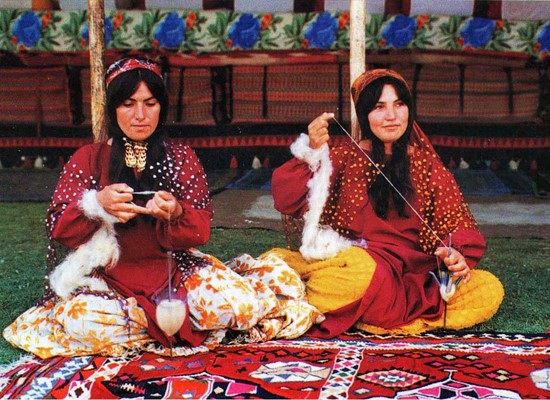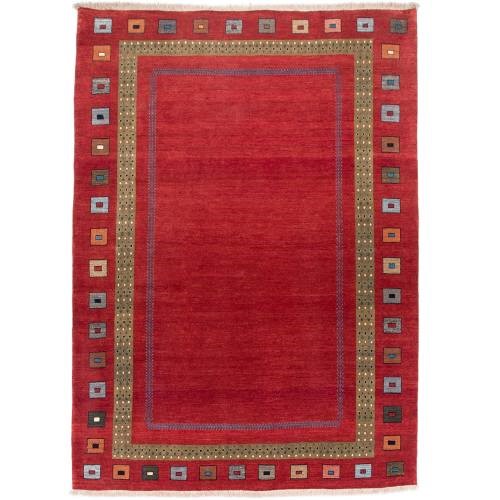Persian Carpet

Persian carpet is one of those handicrafts belonging to Iran that is known and recognized all over the world. Unique designs and patterns plus high quality in materials and textures are the two main reasons for the global fame of Persian carpets.

However, carpets and rugs of Iran are more important than ordinary handicrafts. In fact, the art of carpet weaving and the patterns and motifs that exist in that originate from the ancient culture of this country. From the material used to make Persian carpets to its color and design, has a history, culture, anthropology, tradition and lifestyle.
In addition, the carpet weaving industry in Iran is very prosperous and is an important part of the country’s exports. The variety of sizes, patterns and designs, colors and materials, types of weaves and even the identity of the weaver in Persian carpets has made it satisfy every taste. Everything in it has power, from the colors to the spirit that exists in its heart and fabric. Persian carpet is a valuable work of art that nothing else can be.
Even the process of preparing Persian carpet that include produce natural materials from goat wool, dyeing spun wool, weaving carpets, knitting, scissors and cutting the final product from the hanger and it has a philosophy and story. Persian carpets and rugs are sometimes woven by nomadic people. Therefore, the spirit of nature in which people live flows in the carpet. It is unique and attractive that dazzles everyone like an art show.
Although traditional skills of carpet weaving in Fars and Kashan were inscribed on the Representative List of the UNESCO Intangible Cultural Heritage of Humanity In 2010. However, the cities of Isfahan, Qom, Nain, Tabriz, Mashhad and Kerman are also world famous for carpet weaving. Delicate textures, special colors, durability, longevity, and originality are the characteristics of Iranian carpets and rugs. What distinguishes Kashan carpet is the asymmetric knitting method, which is also used in Iranian textile weaving. In fact, backside of these carpets is evenly knotted. Fars carpet is also famous for using the horizontal frame placed on the ground, and no design.

Persian carpets were divided into categories based on several different factors. One of these factors is material. Accordingly, the types of it include:

Silken carpet
Silken carpet is one of the most expensive and at the same time favored Persian carpets. The use of silk in the manufacture of carpets and rugs gives it a special effect and produces an eye-catching work of art. Sometimes silk is used only on parts of the carpet that want to be highlighted.
Woolen carpet
Woolen carpets can be found in almost every Iranian home. This type of carpet, which is made of fleece, has different types. The breed of sheep that is woven for the carpet and in what area it grew affects its quality and physical characteristics. This makes a difference in the characteristics of the carpets and rugs too.
Cottony carpet
In modern carpet weaving, cotton material is widely used due to its availability. In fact, most of the new carpets we see use cotton material in the fabric. A variety of new and special colors as well as different designs and shapes can be used in the texture of cotton carpets.
Gabbeh
No type of Iranian carpet and rug originates from the heart of nature in all aspects as much as Gabbeh. Gabbeh is made of natural wool as well as natural dyes derived from plants. This kind of person carpet has abstract designs and is full of unique geometric shapes. Gabbeh is one of the native Iranian arts that are often woven by women.
Persian Gabbeh is known both for the different type of wool that is used in it and for the simple designs that mainly include geometric shapes and simple animal designs. Although the Indians have tried to produce the Indian version of the Iranian Gabbeh, these two products are by no means comparable.

Jajim
Jajim is a light and delicate Iranian rug that has a wide range of uses. This type of carpet often has a striped design and is made by special machines in any size and dimensions. Lorestan, Hamedan, Mazandaran, Fars, Azerbayjan, Ardebil, Kermanshah and Kurdistan provinces have the largest jajim weaving industry in Iran.


Kilim
Kilim is one of the types of Iranian carpets that Westerners have shown great interest in buying and using in their homes. This type of carpet, which is made of tapestry, has different and attractive designs and patterns. In addition, the colors used in this carpet are traditional and original. Of course, other countries such as Azerbaijan, former Ottoman Empire, Iran, and Turkic countries also have an ancient history of making kilims.

Heriz carpets
Quality and radiance are the two distinctive features of these carpets. In addition, the beautiful three-cornered outline used in the design of this type of carpet is unique in its kind.

Persian carpets can be placed in other categories. For example, if we want to base the financial value on the classification of it, we come to a wide range of carpets. Some Persian carpets are considered antique and are even kept in museums. Therefore, the material value of it is considerable.
Persian carpet is a valuable commodity and handicraft that is popular all over the world. The carpet production and industry, as well as its purchase and sale, has always been one of the most profitable industries in Iran, and many investors and experts from all over the world have worked in this field.
If you are also interested in entering this colorful, attractive, original and also profitable industry, you can get help from HIVA international business group. We will asset and guide you to purchase carpet from direct supplier.
